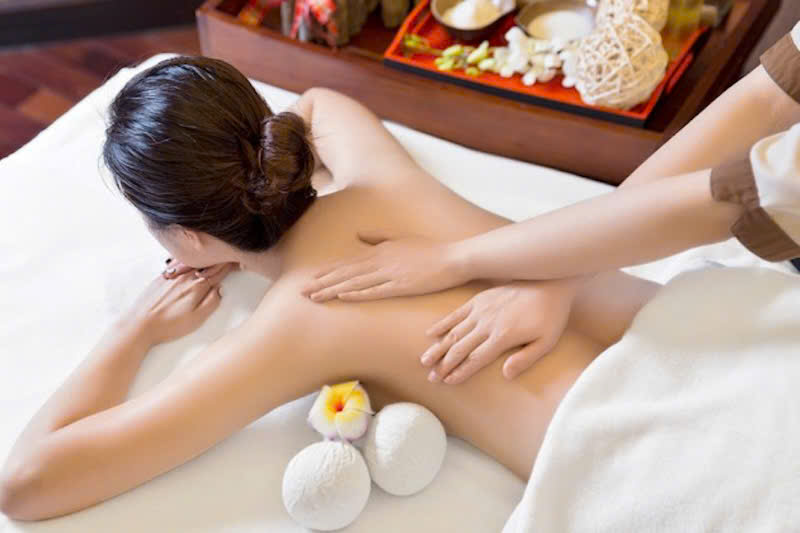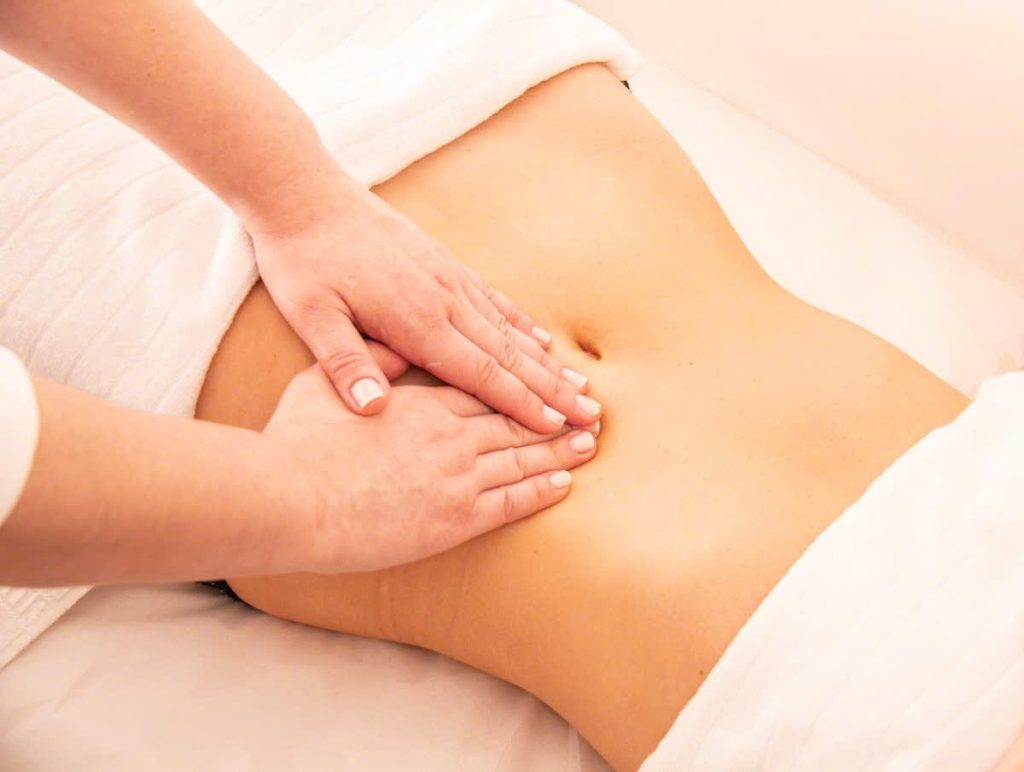Massage Precision Pain Relief for a Stronger, Healthier You
In today’s fast-paced world, stress, injury, and strain often take a toll on our bodies. Massage, a time-tested therapy, offers profound relief from physical discomfort and promotes overall wellness. Whether you’re seeking relief from chronic pain or aiming to enhance your physical performance, massage can be a vital component of your health journey. This article explores the transformative power of massage and how it can pave the way for a more resilient, healthier you.

Understanding Massage and Its Impact on the Body
Massage is more than just relaxation; it’s a scientifically backed technique that influences various aspects of our physiology and psychology. Before delving into specific strategies for pain relief and wellness, let’s understand what massage does to the body and why it’s an essential tool for holistic health.
Massage involves manual manipulation of soft tissues—muscles, tendons, ligaments, and fascia—to promote healing, reduce pain, and improve circulation. It is a practice rooted in ancient traditions, yet modern science continues to uncover its myriad benefits, including stress reduction, immune support, and enhanced recovery.
In this section, we’ll examine the fundamental mechanisms of massage and how it interacts with the body’s systems to foster health and resilience.
The Biological Mechanisms Behind Massage
Massage influences the body primarily through mechanical and neurological pathways. When pressure is applied, it stimulates blood flow, encourages lymphatic drainage, and relaxes tight muscles. These mechanical effects lead to increased oxygen and nutrient delivery to tissues while facilitating the removal of metabolic waste products.
From a neurological perspective, massage triggers the release of key chemicals such as endorphins, serotonin, and dopamine. These neurochemicals are responsible for mood enhancement and pain modulation. Additionally, massage can decrease levels of stress hormones like cortisol, contributing to a sense of well-being.
Understanding these biological mechanisms underscores how massage isn’t merely a superficial therapy but one that actively engages systemic health processes. It acts as a catalyst for pain relief, recovery, and mental clarity.

Emotional and Psychological Benefits of Massage
Beyond physical effects, massage plays a significant role in mental health. The tactile interaction between therapist and client fosters a sense of trust and relaxation. This connection can reduce anxiety and depressive symptoms, which often accompany chronic pain or injury.
Massage therapy also encourages mindfulness, as it directs focus to bodily sensations and breathing. This heightened awareness can help individuals recognize tension patterns and develop better stress management techniques. The calming environment of a massage session can create a sanctuary where mental resets are possible.
Incorporating massage into your routine can, therefore, support emotional resilience, mood stability, and an overall sense of harmony—crucial components of a stronger, healthier lifestyle.
Types of Massage Techniques and Their Specific Benefits
Not all massages are created equal; each technique targets different tissues and addresses specific concerns. Here, we’ll outline some common modalities:
- Swedish Massage: Known for its broad strokes and gentle pressure, this technique promotes relaxation and improves circulation.
- Deep Tissue Massage: Focuses on realigning deeper muscle layers, ideal for chronic pain and injury rehabilitation.
- Trigger Point Therapy: Targets specific knots or tender points that refer pain elsewhere, useful for localized discomfort.
- Shiatsu: A Japanese technique applying finger pressure along meridian lines, blending physical and energetic healing.
- Sports Massage: Designed for athletes, this combines stretching, deep work, and recovery strategies to enhance performance.
Each method provides distinct benefits, whether your goal is stress relief, injury recovery, or performance optimization. Choosing the right massage technique should align with your specific needs and health goals.
Strategies for Incorporating Massage into Your Pain Management Routine
Achieving lasting pain relief and optimal health requires a consistent and strategic approach to massage. While it may seem straightforward, integrating massage into your daily or weekly routine involves understanding your body’s signals, selecting appropriate techniques, and combining therapies effectively.
A comprehensive pain management plan includes professional massages, self-massage techniques, lifestyle modifications, and supportive therapies. This holistic approach ensures sustainability and maximizes benefits.
In the following sections, we’ll explore practical strategies for making massage a central part of your health regimen, tailored to your individual needs.

Developing a Personalized Massage Routine
Creating a personalized massage routine begins with self-assessment and goal setting. Are you dealing with chronic back pain, shoulder tension, or generalized fatigue? Identifying specific discomforts guides your choices.
Start by scheduling regular massage sessions with qualified therapists—ideally once or twice a month—while incorporating self-massage practices in daily life. Use tools such as foam rollers, massage balls, or hands-on techniques to target sore areas.
Consistency is crucial. Regular massage not only alleviates existing pain but also prevents future issues by maintaining muscle flexibility and circulation. Track your progress and adjust frequency based on how your body responds.
Combining Self-Massage and Professional Techniques
While professional massage provides deep, targeted relief, self-massage offers convenient, immediate care. Learning proper self-massage techniques can empower you to manage minor discomforts promptly and regularly.
Self-massage benefits include:
- Increased blood flow to localized areas
- Reduced muscle tension
- Enhanced awareness of pain patterns
- Prevention of chronic tightness
Utilize resources such as instructional videos, apps, or workshops to learn effective methods. Focus on major muscle groups susceptible to tension, such as neck, shoulders, hips, and thighs.
Complement professional sessions with self-care routines—applying heat or cold, stretching, or foam rolling—to enhance the overall effectiveness of your pain relief strategy.
Integrating Massage with Other Therapeutic Modalities
For comprehensive pain management, should be part of a multidisciplinary approach. Combining it with physical therapy, chiropractic care, acupuncture, or fitness training can address root causes more effectively.
Also, lifestyle factors like nutrition, hydration, sleep quality, and stress management influence your body’s ability to recover and heal. Proper hydration aids tissue repair, while adequate sleep facilitates relaxation and regeneration.
When integrated seamlessly, these modalities create a synergistic effect, amplifying the benefits. Consulting with healthcare providers about combining therapies ensures safety and maximizes outcomes.

Establishing a Long-Term Wellness Plan
Sustainable health strategies require long-term commitment. Establish a routine that includes consistent sessions, self-care practices, healthy lifestyle choices, and routine health checkups.
Set realistic goals—whether reducing chronic pain, improving flexibility, or enhancing mental clarity—and monitor your progress. Adjust your plan as needed, integrating new techniques or modalities to maintain motivation and effectiveness.
Remember, the objective isn’t instant relief but building resilience and vitality over time. A well-balanced, personalized wellness plan rooted in regular can dramatically influence your quality of life.
The Science of Pain and How Provides Relief
Pain is a complex sensation influenced by physical, neurological, and psychological factors. Deciphering how alleviates pain requires understanding its impact on these interconnected systems.
Pain perception involves nerve signals transmitting information from damaged tissues to the brain. Chronic pain often persists even after tissue healing due to neural sensitization. intervenes in this process by modulating nerve activity and promoting tissue healing.
In this section, we’ll explore the scientific principles underpinning massage’s effectiveness in pain relief and ways to optimize its benefits for your health.
The Neurological Pathways Modified
When you experience pain, specialized nerve endings—nociceptors—detect damage or inflammation and send signals to the central nervous system. can influence this pathway by:
- Stimulating mechanoreceptors that inhibit nociceptive signals
- Increasing endorphin and serotonin levels that naturally block pain perception
- Disrupting pain-spasm-pain cycles by relaxing muscles and reducing nerve hypersensitivity
Regular may also aid in neuroplasticity, helping the nervous system recalibrate and diminish abnormal pain responses over time.
Understanding these pathways demonstrates how isn’t just a superficial touch but a scientifically grounded intervention capable of altering pain processing at the neural level.
Inflammatory Response and Tissue Repair
Inflammation is a natural response to injury, but chronic inflammation perpetuates pain and delays healing. techniques, especially lymphatic drainage and deep tissue work, can:
- Reduce swelling by promoting lymph flow
- Accelerate the removal of inflammatory mediators
- Stimulate blood flow to deliver nutrients necessary for tissue repair
By supporting physiological processes of healing, helps transition tissues from an inflammatory state to recovery, ultimately reducing pain and restoring function.
Psychological and Emotional Influences on Pain Perception
Pain is not solely physical; psychological factors like stress, anxiety, and emotional trauma significantly influence how pain is perceived and tolerated.
fosters relaxation and emotional release, often leading to decreased anxiety and improved mood. Neurochemicals secreted during , such as endorphins, play a crucial role in emotional regulation and pain modulation.
Addressing both physiological and psychological components of pain through creates a comprehensive approach that enhances pain relief and fosters resilience.
Optimizing for Chronic Pain Conditions
Chronic pain requires a tailored approach. Combining different techniques with other therapies such as stretching, strengthening exercises, and mindfulness can produce sustainable results.
Monitoring your responses and maintaining open communication with your therapist ensures your treatment is personalized. Integrating education about body mechanics and ergonomics supports long-term management.
By understanding the scientific basis of pain and role in mitigating it, you empower yourself to make informed decisions about your health.
Conclusion
is a versatile and scientifically supported modality that promotes pain relief, tissue healing, mental well-being, and overall health. By understanding the biological, neurological, and psychological mechanisms at play, you can strategically incorporate into your routine—whether through professional sessions or self-care practices—to cultivate resilience, strength, and vitality. Embracing as part of a comprehensive wellness plan unlocks the potential for a stronger, healthier you, enhancing both body and mind in harmonious balance.
The Role in Athletic Recovery
Athletic recovery is a pivotal aspect of sports performance, influencing how athletes train, compete, and recuperate. Proper recovery not only optimizes performance but also mitigates the risk of injuries. Among the strategies available, therapy plays a crucial role in accelerating recovery, enhancing flexibility, and promoting overall wellness.
In this section, we will delve into the specific ways benefits athletes, examining its physical, psychological, and functional impacts on recovery processes.
Enhancing Blood Flow and Oxygen Delivery
One of the fundamental benefits of is its ability to enhance blood flow. Enhanced circulation plays a critical role in recovery by delivering oxygen and nutrients to tired muscles while facilitating the removal of metabolic waste products.
- Increased Circulation: stimulates blood vessels, promoting vasodilation and thereby increasing blood flow. This process ensures that essential nutrients reach the muscles that require reparative support.
- Metabolic Waste Clearance: During physical exertion, byproducts like lactic acid accumulate in muscle tissues, causing soreness. helps clear these accumulated toxins, providing a fresher environment for recovery.
- Nutrient Delivery: Enhanced blood flow not only aids in the removal of waste but also supports nutrient delivery. Amino acids and glucose, vital for muscle repair and recovery, can reach damaged tissues more efficiently, leading to faster regeneration.
The ability to maintain ample blood circulation through means that athletes can recover more effectively and be prepared for their next performance, thus maintaining a continuous training cycle.
Alleviating Muscle Tension and Reducing Soreness
Muscle soreness and tension are common experiences for athletes, often undermining performance. Here, steps in as an effective solution, providing a host of benefits that can rejuvenate athletes physically and mentally.
- Targeting Specific Muscles: Techniques like deep tissue and trigger point directly manipulate tight muscles, effectively releasing tension. By doing so, can dramatically reduce delayed onset muscle soreness (DOMS), commonly experienced after intense workouts.
- Improving Flexibility: Regular enhances muscle elasticity, which is critical for an athlete’s performance. By reducing stiffness in muscles and connective tissue, athletes can move more freely and perform at their best.
- Enhanced Recovery Time: Alleviating soreness through decreases downtime between training sessions. This enhanced recovery time allows athletes to resume training more quickly, promoting continuous improvements in their fitness regimes.
By effectively alleviating muscle tension and soreness, serves as a vital component of any athlete’s recovery toolbox, setting the stage for enhanced performance in their subsequent training or competitions.
Psychological Benefits of Massage for Athletes
The psychological toll of training and competition can not be overlooked. Athletes often experience stress, anxiety, and mental fatigue, all of which can impact performance. therapy can play a significant role in improving mental well-being, aiding the psychological aspect of recovery.
- Reducing Stress and Anxiety: The relaxing effect of promotes the release of neurotransmitters like serotonin and dopamine, which help alleviate feelings of stress and anxiety. A calmer mind translates into improved focus and performance during training and competition.
- Promoting Mind-Body Connection: enhances an athlete’s awareness of their body. Increased mindfulness can lead to better biomechanics and improved posture, ultimately resulting in superior performance and reduced injury rates.
- Emotional Release: Athletes may experience pent-up emotional tension from rigorous training and competition. therapy can facilitate emotional release, helping athletes process their emotions and maintain mental clarity.
By addressing both the physical and psychological dimensions of recovery, therapy serves as a holistic approach, ultimately bolstering an athlete’s performance.
Incorporating Massage into Training Regimens
For athletes seeking to integrate massage into their training regimens, consistency and planning are key. Developing a tailored massage strategy will amplify recovery benefits.
- Frequency and Timing: Regular sessions—whether post-training or on rest days—allow athletes to maximize the advantages Proximity to key competition dates is essential, with many athletes using as part of their tapering routines.
- Mixing Techniques: Different massage techniques can serve varied purposes. For example, athletes may benefit from deep tissue for muscle recovery, while Swedish may promote relaxation and stress relief. Mixing methods can cater to specific needs throughout the training cycle.
- Working with Professionals: Collaborating with qualified therapists who understand the unique demands placed on athletes can ensure the most effective treatment plan is devised. Regular communication about the athlete’s needs and feedback can optimize the outcomes of each session.
Incorporating as a routine element of athletic training can enhance recovery processes, allowing athletes to train more effectively and reach their peak performance.https://www.google.com/knowledgegraphshares?sca_esv=41514daaec8f90aa&hl=vi&gl=vn&output=search&kgmid=/g/11ld8cgf50&q=Citymax+spa-+thai+massage-massage+home+service+bur+Dubai&shndl=30&shem=lspt11&source=sh/x/loc/act/m1/5&kgs
Conclusion
The multifaceted role of in athletic recovery underscores its importance within a comprehensive training regimen. By fostering enhanced blood flow, alleviating muscle tension, promoting psychological well-being, and strategically integrating it into training routines, athletes can unlock their fullest potential. As athlete wellness continues to evolve, recognizing and utilizing the profound benefits of can facilitate not only improved performance but also overall health—paving the way for lifelong athletic success.https://jobedubaispa.com/expert-massage/
